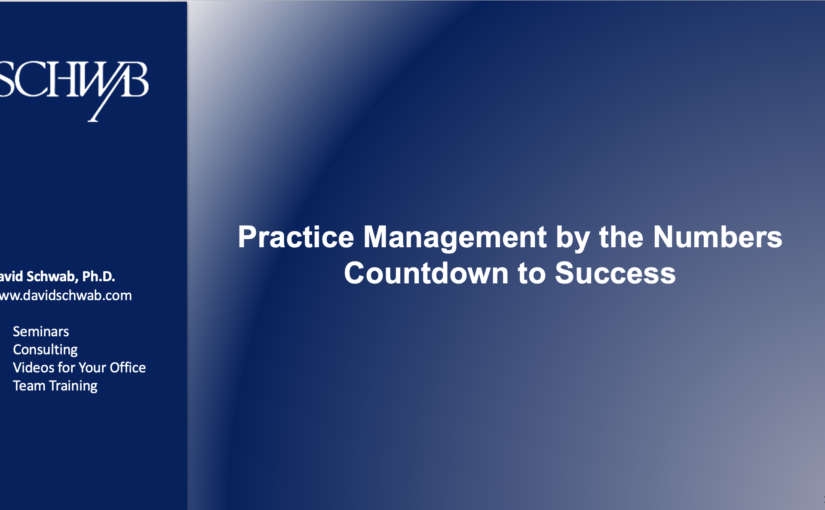Free Webinar Presented by David Schwab, Ph.D.
NEW! Fast-paced one-hour live webinar loaded with insightful, practical pearls. In a world challenged by a pandemic and economic uncertainty, this timely and important webinar delivers upbeat messages, clear insights, and step-by-step advice on how run a very efficient and successful dental practice.
This webinar is available for dental specialists to offer to referring dentists, study clubs to schedule for members—and even group practices (two doctors or more) to schedule for team training. Thanks to corporate support, it is offered at no charge.
Attendees will learn:
7 Confident responses to the money objection
6 Action steps to higher case acceptance
5 Critical reasons why patients accept treatment
4 Great responses to the “I’ll think about it” objection.
3 Practical ways to convert leads/inquiries into appointments
2 Important reasons that patients do not accept treatment
1 Essential action step you should take immediately.
Schedule this live webinar now!
David Schwab, Ph.D.
Call or text: (407) 324-1333
E-mail: dschwabphd@me.com
About the Speaker:
David Schwab, Ph.D., is a motivational speaker, consultant, and author who helps dentists grow their practices, educate their patients and train their teams to make practices more profitable.
Here are some comments from seminar attendees:
- Our most requested speaker!
- Awesome!
- Inspirational.
- Content was relevant and specific.
- An “11” on a scale of 1-10.
Dr. Schwab has served as Director of Marketing for the ADA and as Executive Director of the American College of Prosthodontists. Recognized as a prolific and insightful author, Dr. Schwab’s practice management and marketing articles have appeared in numerous publications, including the Journal of the American Dental Association, Dental Economics, the Seattle Study Club® Journal, and the Journal of the Canadian Dental Association. Dr. Schwab works with major corporations and consults with dental practices.







